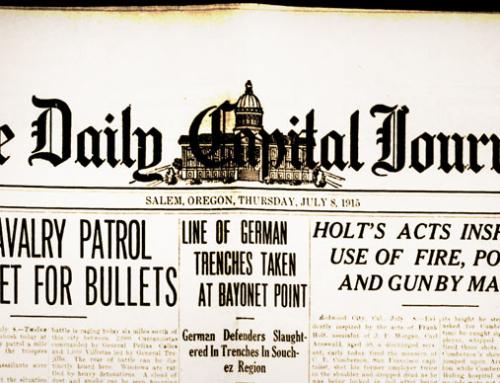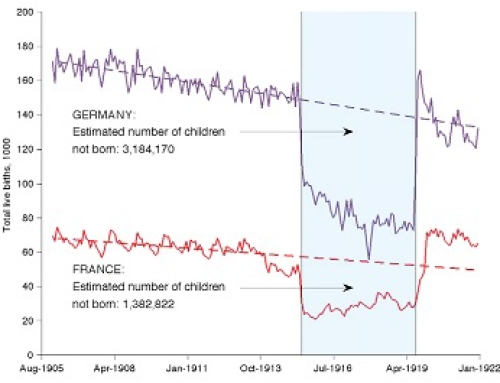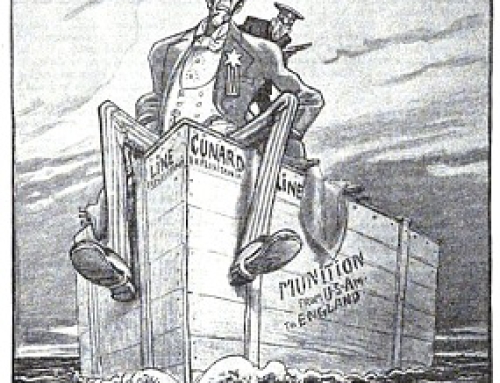by Richard van Pelt, WWI Correspondent
The day’s headlines and news from the Daily Capital Journal:
EXPERT COMPARES NAVAL INCREASE OF THE TWO COUNTRIES
England Has in New Ships About Doubled Germany’s Additions
HAS COMPLETED FOUR SUPERDREADNAUGHTS
Germany Has Nothing That Can Cope with Them – Except Her Submarines
MANY BATTLESHIPS REPORTED SUNK BY BUSY DAME RUMOR
According to All Report the Kaiser Wilhelm der Grosse Was Torpedoed
CRUISER HERTHA IS ALSO REPORTED SUNK
Several Other “Picturesque” Stories Are Peddled by the Gossipy Old Lady
REPORTS OF BATTLE CONTRADICTORY EACH SIDE WINNING
Germans Say Fighting Is Desperate But Without Decisive Result
RUSSIAN CLAIM IT IS A GREAT VICTORY
Grand Duke Nicholas Says Russians Are Successful All Along the Line
The quality of the war news once again prompted comment by the editor:
USE THEIR FUND OF TRUTH FRUGALLY
With the stories from the European battlefields so contradictory that they can only be explained by admitting one or the other sides or both are deliberately lying, the other stories about the upholstering of the French trenches and their being provided with hot and cold baths, with phonographs and dancing girls between the lines for the amusement of both armies, must be taken with considerable salt to make them palatable. The same conditions compel doubt as to the stories of desperate fighting and unequaled slaughter.
According to the latest reports, the German loss in dead, wounded and missing is about 1,250,000, while that of the French is placed at 675,000. If these figures are correct and the English, Russians and Servians have lost in the same proportion, the total loss in dead, wounded and missing would amount to about 3,000,000. this means that about one-third or one-fourth of all the forces sent to the front have been put out of commission. If this loss-rate, which removed men from the firing line at the rate of 24,000 a day, is kept up, it can be asserted that the end of the war is not far away. One year of such loss would remove about all the fighting men of Europe. It looks very much as though the statements about losses are about as unreliable as those about victories.
Casualty compilations by year and by month are not readily available, though during the course of the centenary, such data may become available. The editor’s astonishment that German casualties by the end of November, 1914 could be as high as reported is not an exaggeration. For the entire war, German casualties constituted nearly 65% of the total troops mobilized, or 7,142,558 killed, wounded, missing, or captured. Life in the trenches was nowhere as idyllic as described in this day’s paper.
More sophisticated trenches could be found where the soil was limestone or chalk. At Confrecourt, for example, an existing limestone cave associated with a monastery was converted for military use by the French.







Leave A Comment